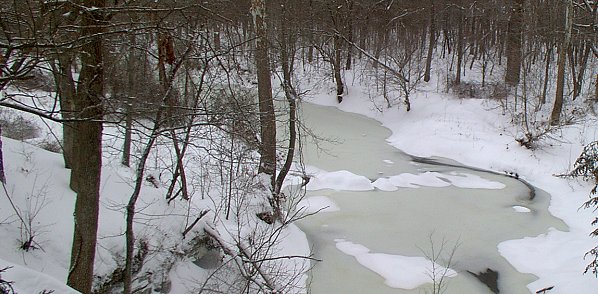A Brave New World:
Fostering Collaboration to Achieve Common Goals
PWCA Presentation for the Virginia Urban Forestry Roundtable, 9 Feb 2007
Go ahead, work hard and never be afraid to try something. Even if you don't make it, at least you can say you tried. ~Guy Lafleur |
|
Every partnership requires some level of risk.
• It is against the nature of government to allow outside groups to control something that might end up making our organization (or us) look bad.
• NGO's have a higher level of confidence that government will do nothing, or nothing out of the ordinary.
|
| Top Ten Ways to Partner with Those Pesky Non-Government Organizations |
 Organizations and agencies work together to conserve important natural resources. Organizations and agencies work together to conserve important natural resources.
I don't want to be just a voice on the phone. I have to get to know these guys face-to-face and develop a sincere relationship. That way, if we run into problems in a deal, it doesn't get adversarial. We trust each other and have the confidence we can work things out. -- Wayne Huizenga |
Step 1: Don't go on a “blind date” with an NGO. Take the time to get to know each other.
| |
|
|
|

Roundtables and Workshops |

Nature Tours |

Stewardship Activities |

Education Programs |
|
Step 2: Identify Common Goals
Do as I do, not just as I say:
- Ordinances that arm localities with tools to protect urban forests.
- Increased sense of stewardship with citizens, developers, businesses and government officials.
|
Step 3: Choose a project that offers benefits to all partners.
How can citizens understand the rules if local governments don't speak the same language?
- We need regional consistency in regulations and definitions;
- Watershed-based outreach programs;
- State legislation that requires localities to protect trees.
|
 |
Step 4: Talk with Partners
Identify specific goals, clarify the scope and limits of the partnership:
- How will partnering increase opportunities for a successful outcome?
- What resources does each partner bring to the table?
- What is the timeline for the project?
- How will this affect each partner's capacity to participate productively?
- What type of media coverage is acceptable to each partner?
- How does each partner expect to benefit from this project?
|
|
Step 5: Identify Deal Breakers
Are all partners prepared to make clear commitments?
What circumstances would require you to break off the partnership?
Government agencies and nonprofit organizations are fundamentally different.
- It is against the nature of government to allow outside groups to control something that might end up making their agency look bad.
- NGO's have a higher level of confidence that government will do nothing, or nothing out of the ordinary.
|
 |
|
 Step 6: Agree on How to Measure Success Step 6: Agree on How to Measure Success
|
|
|
 Step 7: Develop a realistic timeline that is fair to all partners. Step 7: Develop a realistic timeline that is fair to all partners.
- Who is going to coordinate different pieces of the project to ensure timeline is met?
- How will volunteers be rewarded for their support?
|
Step 8: Share information on
a regular basis.
Communication
is the
Key to Success! |

|
|
Step 9: Brag about your partnership.
 |
Success will never be a big step in the future,
success is a small step taken just now.
-- Jonatan Mårtensson |
|
Step 10: After completing a successful project, consider aiming higher.
|
Prince William Conservation Alliance
 |
The Prince William Conservation Alliance is a nonprofit watershed organization serving Prince William and surrounding communities.
We're working to conserve, preserve and restore local waterways, urban forests and natural areas, and increase community participation in stewardship opportunities. |
|

